The mist rises slowly from the chilled water, like an eerie apparition on this Halloween eve, as I cautiously idle the boat through my most productive smallmouth haunts. With eyes trained squarely on the graph, I scan the underwater world from above, searching for the tell-tale signs of baitfish – and the hungry predators that gorge on them.
A dark pod of baitfish suddenly lights up the screen. The baitfish are suspended in 24 feet of water over a hump 38 feet down, with the requisite hooks of bigger fish scattered around the perimeter. I immediately hit the motor’s kill switch and ready my gear. The 3/4-ounce spoon tumbles quickly to the magical depth. Three quick snaps of my wrist, and the first fish of the day clobbers the metal offering on its seductive drop. After releasing the chunky 3-pound smallmouth, I scan the expanse of lake before me, and a wide grin spreads across my face. Trick or treat, indeed.
Most anglers own a collection of jigging spoons, but many relegate them to the third or fourth drawer of the tackle box – destined to rarely get wet. For those who jump on this vertical approach, though, big bass and plenty of them are theirs to reap. Primarily a fall tactic, using spoons is also a proven method for connecting with summer smallmouths.
The straight down facts
Spoon jigging is the truest form of vertical presentation. To be effective, your metal offering must be directly under your rod tip when being worked. Casting rarely comes into play. This is in sharp contrast to the chuck-and-wind mentality most of us ascribe to.
Moving out and away from shorelines is another necessary commitment. We bass anglers are programmed to fish visible structure the majority of the time, but when using jigging spoons, this is not part of the equation.
Why even use jigging spoons for smallmouths? First, because you’re keying in on locatable fish that are hard to catch by using any other method. You can target specific depths within the water column and bypass 90% of the fishless water in a lake. The icing on the cake, though, is that a jigging spoon, through the action an angler imparts, precisely mimics a baitfish. The bottom line is, it looks and acts alive.
Send out the search crew
Locating productive fish-holding spots is mandatory before getting your spoon wet. With high-detail graphs and GPS units, this task is fairly simple.
Summer can be productive, but it can also be a hit-and-miss time for spoon fishing. Summer finds a healthy population of smallmouth bass relating to off-shore humps, staging over or near points, or suspended within deep midlake regions. Many of these location preferences rely on the presence of baitfish. If baitfish such as smelt, shiners, or shad become scattered or head shallow, other tactics should get the nod.
Come fall, these specific locations become much more concrete. Smallmouths follow prey to their wintering grounds and set up shop alongside the swimming buffet table. The bronzebacks school in large groups, in specific spots, and thereby become easy pickings for a well-presented jigging spoon.
No matter what the season, begin your day with a cruise around the lake, while paying careful attention to your on-board electronics. Water 20 feet and deeper should get some of the attention, but depths between 30 and 40 feet often support the highest concentrations of bass. I’ve also had luck in water upwards of 100 feet deep, so never discount those big holes. If baitfish are present, smallmouths will be, too.
Keep your eyes peeled for pods of baitfish to appear on your sonar screen. Depending on your unit, this will often take the form of a large dark cluster or a series of smaller clusters. Smallmouths generally appear as large hooks (an upside down V), either directly under the pod of baitfish or off to the side.
Setting up shop
Once you locate baitfish and bass, follow a series of steps. If your boat has an onboard GPS unit, punch in the location’s co-ordinates. This will help you relocate the general area if you drift far from the school. It will also provide possible starting points for future excursions – a milk run, of sorts.
Toss out a marker buoy. Again, this aids in orientating yourself to the school of fish and helps establish your bearings.
Maintaining direct overhead contact with the school of bass is imperative. Since you will be using a vertical technique, any significant variance away from the fish will find your lure in dead water. If the bait pods or hooks disappear from your sonar screen, slowly work the boat outwards from the last known co-ordinate or marker buoy until you reconnect. Smallmouths follow schools of preyfish, so always be prepared to move along with them.
Dance up a storm
Working a jigging spoon is simple. Once your boat is in position, open the bail of your spinning reel or disengage your baitcaster and let the spoon descend on a slack but controlled line. An average rule of thumb for fall rates is 1 foot per second. This can vary, depending on size, weight, and action of the spoon. If the cone angle of your sonar is positioned correctly and has a wide enough beam, you should be able to follow the path of your spoon as it makes its way through the depths.
Counting down or visualizing are two ways of getting in the strike zone. A third method is letting your spoon reach bottom, then reel it up to the desired depth. This can be achieved by heeding the line retrieve ratio usually stamped on the reel or printed in its instruction manual. It will state clearly how many inches of line can be gained by one revolution of the reel handle. A simple count, while turning the handle, will get the job done.
The mechanics of jigging can vary, but general rules apply. Keep your rod at the 8- or 9 o’clock position. This gives you leverage for upward sweeps of the rod during hook-sets, while also minimizing stress on the forearms. To impart action to the spoon, utilize lifts or wrist snaps, and generally bring the rod to a 10- or 11-o’clock position at the height of the rise.
Once there, immediately allow the spoon to flutter back down to the starting position, ensuring it falls on a slack line. The speed and height you lift the rod is usually dictated by the mood of the fish. Some bass respond better to an aggressively worked spoon, while others might only hit metal fakes that barely move.
Trial and error
One of my best days of jigging came as a direct result of trial and error. Finding both bass and bait on the sonar that afternoon, I failed to realize that my large-profile bait and pump-and-fall method was not what the smallmouths wanted – in fact, two full hours of not what they wanted. Knowing my last outing had produced with this technique and bait, though, stubbornness set in and I stuck with it through those fruitless hours. Finally, after changing to a diminutive spoon and replacing those pumps with almost no movement, I started putting fish in the boat – and lots of them. A valuable lesson was learned that day. Experimentation is definitely important.
Most strikes on a jigging spoon come as the bait free-falls after a lift. The spoon’s flash, in conjunction with the erratic darting and fluttering action, is often irresistible to a smallmouth. Pay close attention to your line on each drop. A jump or tick might signal a strike, so be prepared to set hook.
Some smallmouths grab the bait with nary a quiver, and will only be discovered when you make your next lift. Strike hard and fast.
Try to make the initial hook-set count. During the fight, smallmouths are notorious for rushing topside, most often shaking their heads. Taking a moment to strike a second or third time often leaves slack in the line, which can lead to a lost fish.
The perfect spoon?
There is no perfect bass jigging spoon. Different conditions, fish attitude, and an angler’s technical prowess make pinpointing only one spoon difficult, but here are general guidelines. The preferred spoon for jigging up smallmouths falls between 2- and 3 inches in length, is generally thin and tapered, weighs between a half and 1 ounce, should be adorned with a quality treble hook, and comes in a flashy hue. Such baits come in a hammered or smooth finish, spruced up with feathers or tinsel, sporting rattle mechanisms, and painted any colour under the sun. The variations are endless.
If you want to choose one go-to spoon for smallmouth bass, though, it would be 2 1/2 inches in length, weigh 3/4-ounce, and be silver. This is a definite standby on the smallmouth scene.
Proven baits include the Bass Pro Shops Strata Spoon and XPS Tungsten Jigging Spoon, Bass ‘N Bait Rattle Snakie, Northland Buck-Shot Rattle, Hopkins’ Shorty Spoon, Luhr Jensen Crippled Herring, Bomber Slab Spoon,Bay de Noc Lure Co. Swedish Pimple, Acme Tackle Co. Kastmaster, and the Cotton Cordell CC Spoon. All deserve a place in your tackle box.
Blade baits are another style of lures deserving consideration for jigging. Horizontal in design and sporting two treble hooks, these metal lures also mimic a baitfish, yet provide a different action when worked underwater. When jigged, they swim up and forward, producing a tight wobble and emitting a high-frequency vibration. Numerous line-tie positions allow an angler to adjust this action, based on the fishing situation they face.
Most blade baits are similar, but nuances can be found in each manufacturer’s product. Proven blades include the Heddon Sonar, Cotton Cordell Gay Blade, Reef Runner Cicada, Bass Pro Shops XPS Lazer Blade, and the Silver Buddy. Go for 1/2- or 3/4-ounce models.
Tools of the trade
Depending on personal preference, jigging spoons and blade baits can be worked effectively with both spinning and baitcasting gear. Choose a rod between 6 1/2 – and 7 feet in length, in medium-heavy action. You need a considerable amount of backbone in the main rod, but a slightly limber tip. These qualities help in setting hooks and fighting fish, while also giving an increased feel to how the spoon is behaving below the boat.
For lines, if using monofilament, choose either 14- or 17-pound test. One preference, however, especially when using spinning gear, is a 20-pound lowstretch braid used in conjunction with a 15-pound fluorocarbon leader. This combo gives you better feel and sense for what your spoon is doing and for hits, while also creating a nearly invisible link to the spoon. Fluorocarbon is a definite must in clear water.
For those willing to give it a go, spoon jigging for smallmouths can offer the possibility for more and bigger fish. As for me, the Halloween-eve excursion ended with a ghoulish smallmouth weighing just shy of five pounds. I surmise this fish only had eyes for the treat knocking tantalizingly on its deepwater doorstep that day. Lucky for me, it didn’t opt for a trick.

Originally published in the 2009 Fishing Annual of Ontario OUT of DOORS magazine.
Justin Hoffman is an outdoor writer, photographer, and YouTuber based in the Ottawa area.
You can find his trove of trail camera compilations and nature videos here.


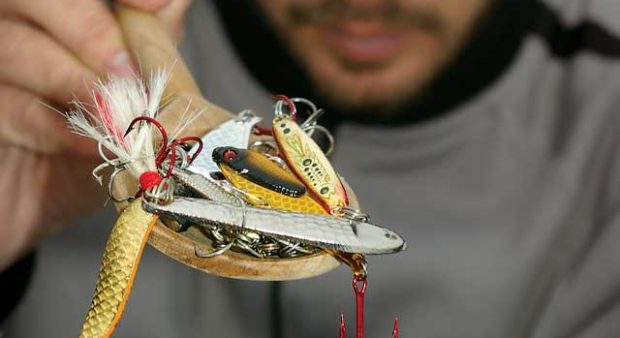
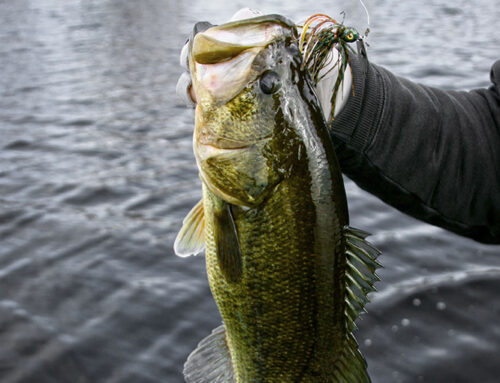
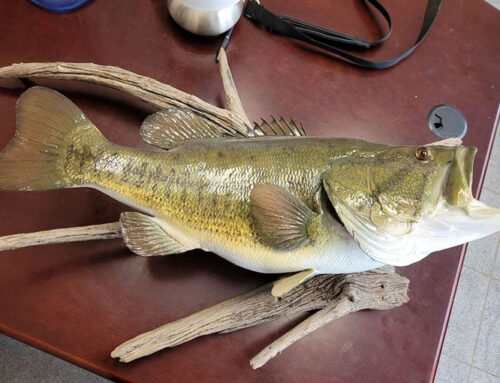
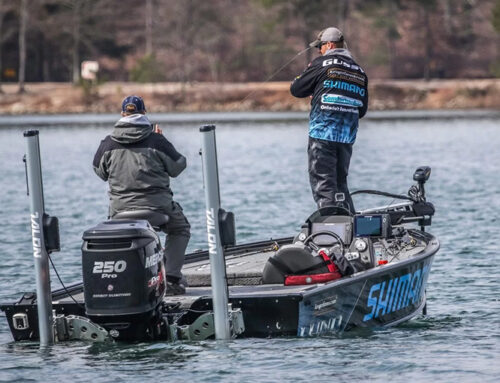
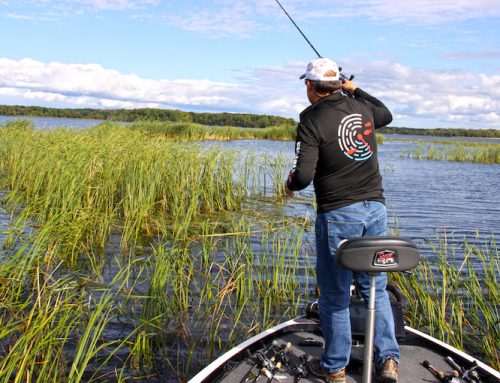
Leave A Comment